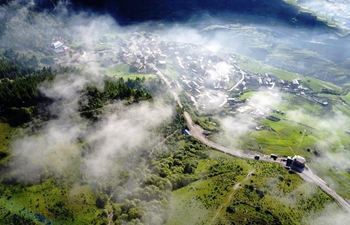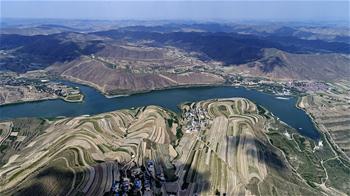NAIROBI, June 21 (Xinhua) -- The number of elephants in Kenya increased by 14.7 percent between 2014 and 2017, wildlife authorities said on Wednesday.
The Kenya Wildlife Service (KWS) which released findings after dry season aerial census conducted in the country's largest conservation area in February said 12,866 elephants were counted in Kenya's top elephant sanctuary -- the Tsavo Ecosystem that covers an area of 49,611 sq km.
"This growth is attributable to decline in level of poaching activities following additional of well-trained and equipped rangers. We are still not out of the woods yet because every new day portends danger to the elephant," KWS Director General Kitili Mbathi told journalists in Nairobi.
He said a total of 1,167 carcasses were recorded during the survey, adding that the 'very old' elephant carcasses had the highest population with more than 53.4 percent numbering 623 of the total remains, followed by old carcasses at 44 percent (514).
Only three and 27 fresh and recent carcasses respectively were encountered during the survey which is held every three years.
Mbathi said nine light aircraft fitted with observer calibrated streamers and flying at altitudes between 300 and 400 ft above ground across the ecosystem were used where data was captured by observers on the airplane using GPS and digital voice recorders.
He however cautioned that the good news should be no reason for complacency as poaching seems to be on the increase all over the continent, especially in countries where the rule of law is fragile.
The census also established that there was an increase in human activities like charcoal burning and livestock-keeping within and around the protected areas compared to previous years and which pose a threat to wildlife and their habitat.
The Assistant Director in Charge of Ecological Monitoring, Dr. Shadrack Ngene, said the census uncovered a large number of elephant calves below three years, which could be seen walking alongside their mothers.
"The increase in population of the young ones is due to reduction in levels of poaching that has taken away stress from the animals. Elephants don't reproduce under duress," Ngene said.
The recovery in elephant numbers is a real Kenyan conservation success story, after elephant numbers plummeted from a peak of 35,000 in 1976 to lowest point of 5,400 in 1988.

















